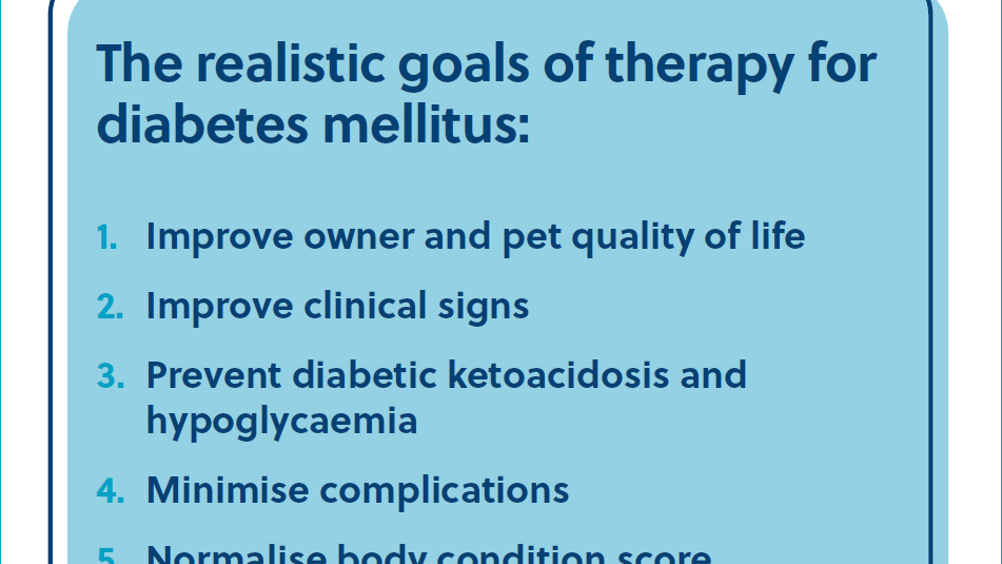References
Improving owner compliance with therapy of canine and feline diabetes: the American perspective

Abstract
Diabetes mellitus in dogs and cats presents unique challenges for pet owners, often resulting in treatment failure and decreased survival rates. However, there are strategies to enhance compliance with therapy and improve the quality of life for both pets and owners. Rather than focusing on tight glycaemic control, the realistic goals for diabetes therapy are based on owner and pet quality of life, prevention of diabetic ketoacidosis, hypoglycaemia and other diabetic complications and normalisation of body condition score. Selection of insulin should be individualised, with factors such as cost, time-action profile and available form considered. Insulin pens can be a valuable tool for improving accuracy and precision of insulin administration, especially at low doses. Insulin cost can vary greatly between countries, which can also impact treatment decisions. For diabetic dogs with finicky appetites or the ‘miniature’ patient, basal insulin therapy can be an effective solution. Reducing the dietary carbohydrate content in feline patients often reduces their insulin requirements. Sodium glucose cotransporter-2 inhibitors offer an exciting new oral option and insulin alternative for newly diagnosed healthy cats in the USA. By tailoring diabetes therapy to the individual pet and owner, veterinarians can improve treatment outcomes, compliance and quality of life.
Although diabetes mellitus is a chronic and treatable disease, it is often associated with relatively short survival times in dogs and cats (Niessen et al, 2017; Tardo et al, 2019; Rothlin‐Zachrisson et al, 2023). Approximately 1 in 10 diabetic dogs and cats are euthanised at the time of diagnosis, and an additional 1 in 10 within the first year of therapy (Niessen et al, 2017). Treatment failures commonly arise from temporary or more permanent compliance challenges and frustrations by pet owners. Specifically, the necessity for sustaining a consistent schedule over years can have a negative impact on an owner's quality of life, especially in patients with inconsistent appetite. Pet owners can experience many obstacles to management of their pet's diabetes, such as lifestyle adjustments, unrealistic expectations, financial burden, concerns about potential complications and inability to administer insulin injections. The financial and time commitments can become overwhelming. Frequent veterinary monitoring of glycaemic control and high insulin cost in some geographic locations contribute to these stresses (Niessen et al, 2017). However, there are simple and practical solutions to long-term compliance issues with regards to therapy that can, and should, be implemented by the veterinary practitioner. These require an understanding of diabetes-related pathophysiology, pharmacology and clinical pathology, understanding of general goals of treatments and, critically, a thorough discussion with pet owners about their goals and abilities.
Register now to continue reading
Thank you for visiting UK-VET Companion Animal and reading some of our peer-reviewed content for veterinary professionals. To continue reading this article, please register today.

